The past few months have been unlike any other in the history of our time. Our lives have been shut down, walls have been put up between us and the things that bring us joy, adventure, laughter, and purpose.
In this time, when the world is pressuring people to sequester, become separate, create social distance and divide, many people are living in emergency mode. Feelings of fear are flooding the body with stress hormones and depleting our vital resources. Now is a time to be greater than our fear, to go inward, and get to work. Now is a time to sharpen the tool of gratitude and wield it to combat fear.
But how do we do that? By focusing attention on what we feel thankful for and pleases us. This simple step shifts our perspective and even our reality. “What you focus on expands,” states Oprah Winfrey. Having gratitude for what we have and looking for the silver linings in the less-than-ideal situations bring us feelings of optimism, peace, and enthusiasm to keep us on this trek as a peaceful warrior.
When experiencing gratitude, Dr. Deepak Chopra, in his article, “3 Essential Practices for Gratitude,” wrote, “You embrace the wisdom of uncertainty, and you sense yourself as a field of in1finite possibilities. Gratitude is a fullness of heart that moves you from limitation and fear to expansion and love.”
A few weeks, I was laying in bed trying to fall asleep, I made the mistake of opening up Facebook. I saw a story about Walmart workers getting sick from the constant exposure to COVID19, then I saw an article about America in a Depression, and then there was the story about Joel Freedman, the owner of the closed Hanemann Hospital’s home being vandalized. Within three-finger swipes upward, I went from relaxed and drowsy to anxious, tense, and alert. I was now worried that I wouldn’t fall asleep. Then I remembered my gratitude practice. I reached my hand over and touched my husband’s sleeping body. I silently whispered – “Thank you for this amazing man, thank you for this comfortable bed, thank you for our home, thank you for our health, thank you for our families, thank you for our animals, thank you for our work and on it went counting my blessings. Within minutes, my body relaxed, the tension and anxiety disappeared, and I fell asleep.
Gratitude is a powerful human emotion. By conveying and receiving simple ‘thank you’ messages, we can genuinely derive the pleasure that we seek everywhere else. Gratitude, derived from the Latin word ‘gratia’, means gratefulness or thankfulness.
In its purest form, gratitude refers to a ‘state of thankfulness’ or a ‘state of being grateful’. One of my favorite quotes about gratitude comes from William Arthur Ward –“Gratitude can transform common days into thanksgiving, turn routine jobs into joy, and change ordinary opportunities into blessings.
In positive psychology, gratitude is the human way of acknowledging the good things of life. Psychologists have defined gratitude as a positive emotional response that we perceive in giving or receiving a benefit from someone (Emmons & McCullough, 2004).
—-let’s check in with you—
Share with us in the comments below what you are most grateful for at this moment right now?
____
So how else does gratitude benefit us when we are caught in a tornado of emotions, stress, anxiety, fear, anger, or generally feeling unbalanced?
Gratitude Keeps You Grounded
When you’re in fear, it is very easy to feel like your thoughts & emotions are all over the place. Gratitude creates a place for all those feelings to come together and land inside you. It allows you to feel centered and balanced again instead of feeling out of control.
If gratitude has such a positive impact, why don’t we leverage as a tool more in business?
We overlook the immense power of practicing it daily, especially in a business context.
My own research on trust has revealed not only that gratitude makes a difference but that people don’t require big gestures, just heartfelt ones. Simple but genuine thank-yous or small, handwritten notes of appreciation can mean the world to people.
When it comes to business, I think we fall into the trap of not seeing people when we work with them. We take them for granted and just assume they don’t need an expression of gratitude.
This oversight can have enormous consequences, particularly if you’re the boss.
A recent study by Bersin & Associates underscores the bottom-line implications of saying thank you in the workplace. It reveals that companies that “excel at employee recognition” are 12 times more likely to enjoy powerful business results. If you aren’t already a believer in the thank you economy, just think about what it can mean to your business if you embrace the power of gratitude. Just think about what it can do to combat the negative stress response brought on by COVID19?
Let me give you an example –
I was hired to transform a healthcare organization that had a 75% attrition rate. For a $25 million a year business, that had a substantial financial impact. When I first met with the CEO was adamant about putting an employee engagement program in place, but the price tag was steep. Before we do that, I suggested he read the employee engagement research from the Pew Research Center. We revied the research together, and it showed him that more than bonuses, trips, or raises the one thing that engaged employees the most was being appreciated.
I looked at him and said, “before you spend a ton of money on an employee engagement program, that may or may not work, what if we were to authentically express appreciation to each of your employees. We came up with a plan where every day, he would write four handwritten thank you notes to each of his employee’s significant others. The goal was to thank them for their ongoing support and mail it to them. Within 12 months of starting this “personal thank you note” program, the organization’s rate of turnover dropped from 75% to 25% and saved the organization millions of dollars in training, recruiting, and retention costs.
—Checking in with you—
On a personal level, what are the qualities that attract you to another person? Share your answer in the comment section below.
—
When I ask this question during speaking engagements, I often hear words like good energy, kindness, sense of humor or physical appearance. The audience is usually surprised when I tell them that the most magnetic trait is not charisma or even a smile but gratitude. In fact, if you think about it, chances are good that the people you like and respect the most—both personally and professionally—have no problem showing their appreciation.
In business, we’re drawn to people who acknowledge our contributions. When those people hold leadership positions, you can see the trickle-down effect on the company as a whole—all the way down to customers. When managers and employees know that company leaders value gratitude, those who serve customers on the front line show appreciation more readily. And we know that the customer who feels appreciated won’t hesitate to return.
Knowing that gratitude comes with so many benefits, why do we still struggle to practice it? We often assume that we do more than we do, or we tell ourselves that it’s not worth the effort. If that’s where you’re coming from, then I have three suggestions to help get you out of your gratitude rut.
1. Take a few minutes each morning to make a list of three to five things you appreciate. This requires only a moment, and it helps you cultivate a habit of gratitude & sets a positive tone for the day. When we’re caught up in our day-to-day routine, we easily overlook the people and things we appreciate. A daily reminder can give us a much-needed happiness boost while also putting us in the gratitude mindset.
2. If you deal with employees, find ways to personalize your appreciation. The method of appreciation or the person who extends the gratitude can make a big difference. For example, some people value acknowledgment before a group, while others prefer a one-on-one thank you. This extra effort demonstrates that showing gratitude isn’t just a routine for you. It makes a difference when people see that you care about what matters to them.
3. Leave yourself open to feedback. Part of expressing gratitude means also hearing what the other person has to say. One of the reasons we get frustrated with gratitude is because when we do show appreciation, we don’t always get the response we expected. An underwhelmed response to your display of gratitude can have several causes. The primary one might surprise you: lip service. If you show gratitude to someone who feels it’s not genuine, the gesture will fall flat. If I, as a leader, thank an employee for doing a great job but ignore his feedback about ongoing issues, it rings a little hollow.
Gratitude builds professional commitment. Grateful workers are more efficient, more productive, and more responsible. Expressing gratitude in the workplace is a proactive action toward building interpersonal bonds and trigger feelings of closeness and connection.
Employees who practice expressing gratitude at work are more likely to volunteer for more assignments, willing to take an extra step to accomplish their tasks, and happily work as a part of the team. Also, managers and supervisors who feel grateful and remember to convey the same, have a stronger group cohesiveness and better productivity. Gratitude makes a leader compassionate, considerate, empathetic, and loved.
Gratitude may be a gesture or a group of kind words that we give or receive from others. These simple exchanges of thankfulness go a long way in affecting our overall biological functioning – especially the brain and the nervous system. The effect of gratitude on the brain is long-lasting (Moll, Zahn, et al. 2007). Besides enhancing self-love and empathy, gratitude significantly impacts body functions and psychological conditions like stress, anxiety, and depression.
From a scientific perspective, here’s what you were experiencing.
–I invite you to close your eyes and think of a time when you felt gratitude. See the situation in your mind’s eye. Connect with it emotionally and physically. At that moment, how are you feeling? What emotions and physical sensations begin to arise as you’re witnessing those images? Share your comments below–
1. Gratitude releases toxic emotions
The limbic system is the part of the brain that is responsible for all emotional experiences. It consists of the thalamus, hypothalamus, amygdala, hippocampus, and cingulate gyrus. Studies have shown that the hippocampus and amygdala, the two main sites regulating emotions, memory, and bodily functioning, get activated with feelings of gratitude.
The other group in the study that was asked to journal their negative experiences instead of writing gratitude letters reported feelings of anxiety and depression.
2. Gratitude reduces pain
Counting Blessings vs. Burdens (2003), a study conducted on evaluating the effect of gratitude on physical well-being, indicated that 16% of the patients who kept a gratitude journal reported reduced pain symptoms and were more willing to work out and cooperate with the treatment procedure. A deeper dive into the cause revealed that by regulating the level of dopamine, gratitude fills us with more vitality, thereby reducing subjective feelings of pain.
3. Gratitude improves sleep quality.
Many studies have shown that receiving and displaying simple acts of kindness activates the hypothalamus and regulates all bodily mechanisms like sleep.
Hypothalamic regulation triggered by gratitude helps us get deeper and healthier sleep naturally everyday. A brain filled with gratitude and kindness is more likely to sleep better and wake up feeling refreshed and energetic every morning (Zahn et al., 2009).
4. Gratitude aids in stress regulation
McCraty and colleagues (1998), in one of their studies on gratitude and appreciation, found that participants who felt grateful showed a marked reduction in the level of cortisol, the stress hormone. They had better cardiac functioning and were more resilient to emotional setbacks and negative experiences.
Significant studies over the years have established the fact that by practicing gratitude, we can handle stress better than others. By merely acknowledging and appreciating the little things in life, we can rewire the brain to deal with the present circumstances like the COVID19 crises with more awareness and broader perception.
5. Gratitude reduces anxiety and depression
By reducing the stress hormones and managing the autonomic nervous system functions, gratitude significantly reduces symptoms of depression and anxiety. At the neurochemical level, feelings of gratitude are associated with an increase in the neural modulation of the prefrontal cortex, the brain site responsible for managing negative emotions like guilt, shame, and violence. As a result, people who keep a gratitude journal or use verbal expressions for the same are more empathetic and positive minded by nature.
Unhappy people focus on their weaknesses and struggle with their self-identity. How can you combat fear and anchor in a mindset of gratitude? Here are some more simple hacks that might help you.
1. Appreciate Yourself
Stand in front of your mirror and speak out five good things to yourself. It can be about your past achievements or your present efforts, your talents, and your virtues. Just say the words aloud. Compliment yourself with words like smart, loyal, disciplined, kind, loving, etc., and notice if that makes you feel better. Repeat this as often as you want to and record your experience.
2. Gratitude journal
You might have heard about this before. A gratitude journal is your personal space to pen down all the little and big things in life that you are thankful for. There is power in words, so don’t overlook the small things, no matter how unimportant they may seem. A gratitude journal can look something like this (use the following statements as thought starters):
- Current challenges I am experiencing and what I am learning from them
- Words of affirmation I’d like to gift myself
- People/Situations I am grateful for
- Significant assets in my life right now
3. Gratitude Video calls.
We all have someone whose unconditional support and help had a positive impact on us. We feel as if we ‘owe’ our happiness and success to them. He/she/they might be your friend, family, or a professional colleague, video call them once or twice a month. Simply set up a time, make the call, and express your thankfulness one more time – let the person feel important. Share some good memories and offer your support. In most cases, gratitude video calls bring a feeling of sanctity and positivity instantly. –Story about mom–
4. Find a gratitude buddy
Find a gratitude buddy for your daily practice – it can be your spouse, your child, or your friend at work. Set aside sometime every day where you two (or more) video chat together and discuss the things you are thankful for. Ask questions to each other and open up informally. Sharing thoughts of gratefulness with someone is a great way to sustain motivation to strengthen your emotional skills.
Experiencing gratitude is one of the most effective ways of getting in touch with your soul. When you’re in touch with your soul, you eavesdrop on the thoughts of the universe. You feel connected to everything in creation. You embrace the wisdom of uncertainty, and you sense yourself as a field of infinite possibilities.
Gratitude is a fullness of heart that moves you from limitation and fear to expansion and love. When you appreciate something, your ego moves out of the way. You can’t have your attention on ego and gratitude at the same time.
Just for a few moments, consider the things you have in your life that you could be grateful for all the nurturing relationships, the material comforts, your body, and the mind that allows you to really understand yourself and everything around you.
Breathe and be grateful for the air that is filling your lungs and making your life possible. Simply feel your body and your life force flowing through, and acknowledge what a miracle it is just to be alive right now. Allow your awareness to appreciate what you are seeing, smelling, hearing, feeling and touching at this moment.
Feel the love, compassion, and understanding that gratitude brings into your heart. Notice how gratitude brings your attention into the present time, which is the moment in which miracles can unfold. The deeper your appreciation, the more you will look at life with the eyes of the soul and the heart. The more your life flows in harmony with the creative power of the universe or the God of your belief system.
Here are a few more gratitude practices for you to try:
1. “365 days of gratitude” container
Since ancient times, philosophers and sages from every spiritual tradition have taught that cultivating gratitude is a key to experiencing deeper levels of happiness, fulfillment, and well-being.
- Who or what inspired me today?
- What brought me happiness today?
- What brought me comfort and deep peace today?
2. Write a thank-you note
Make a list of at least five people who have had a profound impact on your life. Choose one and write a thank you letter expressing gratitude for all the gifts you’ve received from that person. Mail it to them with the intention that your words of appreciation fall on their hearts.
3. Take a gratitude walk
This is a particularly useful practice when you’re feeling down or filled with stress and anxiety. Set aside 20 minutes (or longer if you can) and walk in your neighborhood, around your office, or somewhere in nature.
As you walk, consider the many things for which you are grateful: loving relationships, material comforts, the body that allows you to experience the world, the mind that enables you to really understand yourself, and your essential spiritual nature. Breathe, pause, and be grateful for the air that is filling your lungs and making your life possible.
4. Gratitude Tree
The gratitude tree is an excellent activity for children, and it can also be effective for adults who are open to experiencing a childlike sense of fun and wonder. You will need several double-sided colored sheets of paper, string or ribbon, scissors, twigs or tree branches, some stones or marbles, a vase, and a sense of gratitude.
Step 1: Make one or more leaf cutouts to use as a template for your leaves.
Step 2: Cut out the leaves, punch a hole at the top of each leaf, and loop your string or ribbon through each hole.
Step 3: Put the stones or marbles in a vase and stick the tree branch or twig in the middle.
Step 4: Have your (or your child) draw or write things that you (or your child) are grateful for on the leaves. You can also use photographs if you’d like.
Step 5: Hang the leaves from the branches, and behold your gratitude tree!
This activity is easy and results in a pretty reminder of the things that bring you or your child joy throughout your daily life. It may be intended for kids, but there is no age limit on finding creative ways to cultivate your gratitude, so get to drawing!
Spiritual teacher and empathic healer Matt Kahn reminds us that when we align with fear, it can pause our evolution of consciousness. Or … we can utilize this fear to expand our conscious awareness.
Matt describes how change and loss can be interpreted as adversity, and when we view them as such, we get entrenched in feelings of anger, scarcity, and victimhood.
When you consistently practice gratitude, everything changes. It can only change you for the better, you give yourself the power to surrender and view these occurrences as gifts that inevitably shape you into a better version of yourself.
Let me leave you with this quote –
“Gratitude, like faith, is a muscle. The more you use it, the stronger it grows, and the more power you have to use it on your behalf. If you do not practice gratefulness, its benefaction will go unnoticed, and your capacity to draw on its gifts will be diminished. To be grateful is to find blessings in everything. This is the most powerful attitude to adopt, for there are blessings in everything.” ― Alan Cohen







